Best Time Management Tool - The Law of Cycles
The Kabalarian Philosophy teaches the key to the understanding of the Cyclic Law. With this knowledge one is
able to predict future conditions.
This is not a psychic prediction based
upon a feeling or intuition, but rather a practical approach utilizing
mathematics to measure the quality of time unfolding through the day, month,
or year.
By working with the Cyclic Law you will make your plans at the best
times and will be using time to its maximum potential. By following the
Cyclic Law, life can be an enjoyable experience of constructive
accomplishment, bringing success and happiness. By working with these cycles
you can achieve greater success in your endeavours.
We are all born into time, creating our own personal cycles, or changing patterns
of growth that affect our daily lives. Every year, month, and day holds important
opportunities and lessons for personal growth. Whether in business or in personal
relationships, understanding and working with—not against—your personal cycle
influences the outcome of all your endeavours.
The Mathematical Principle
The Cyclic Law is the application of the Mathematical Principle to time.
Every individual person is born into time and governed by it from the first
breath of life until death. Within the period of time called life, the changing
minutes, hours, days, months, and years bring changing conditions, thoughts,
opportunities, successes, and failures. Although the world at large does not as
yet fully realize it, these fluctuating circumstances of life are not as
haphazard as they appear to be. There is a definite pattern to life, and a
basic, logical, consistent reason for everything. That pattern and reason are
embodied within the Cyclic Law.
Overview of the Cyclic Law
The Cyclic Law unfolds in nine-year, nine-month,
nine-day, and nine-hour cycles, all of which are made up of three basic lesser
periods termed the starting (seeding), the test (growth), and the completion
(harvest) periods. The cycles are not the same for everyone at the same time,
but each person must pass through the same sequence of cycles. When you learn to
act in complete accord with the cyclic conditions of each passing day, then you
are able to start an undertaking at the proper time, follow it through, and
successfully complete it. You can then start something else, or build upon the
first success to reach a greater goal and so on throughout an entire lifetime.
Going against the cycles— either consciously or unconsciously —means working
hard and, though there seems to be progress, suddenly finding that many things
go wrong. Days, months, or perhaps years of effort are wasted; or you partially
succeed in one aspect of life and fail in others, and then wonder
why.
Phases of Plant Growth Illustrate Cyclic Law
|
1st phase |
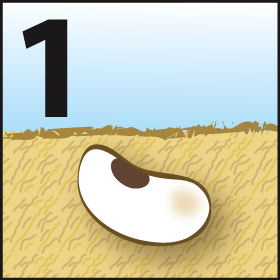 |
SEEDING TIME - The seed is planted in the ground. |
|
2nd phase |
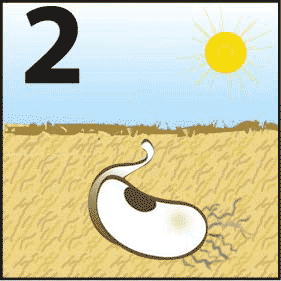 |
DUALITY or DIVISION - Germination occurs, the seed starts a root and
stem. |
|
3rd phase |
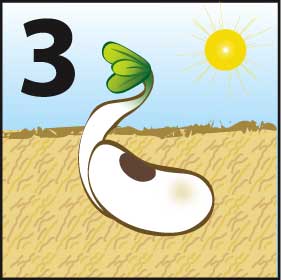 |
MANIFESTATION TIME - Stem appears above ground. It becomes
acclimatized. |
|
4th phase |
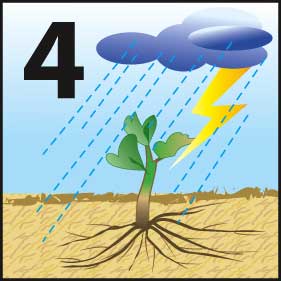 |
TEST PERIOD - Visible growth of plant is suspended temporarily while
the root system develops. Plant is tested for coming growth or
failure. |
|
5th phase |
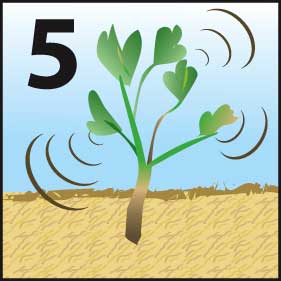 |
ACTIVE GROWTH - Strengthened root system supports rapid growth. Plant
develops branches and leaves. |
|
6th phase |
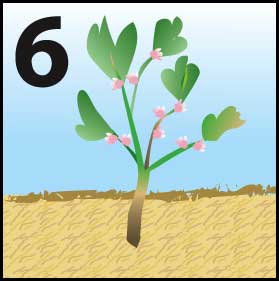 |
BUDDING TIME or PROCREATION - Buds are formed and fill out if plant is
healthy — a promise and indication of fruit depending upon cultivation and
soil fertility. |
|
7th phase |
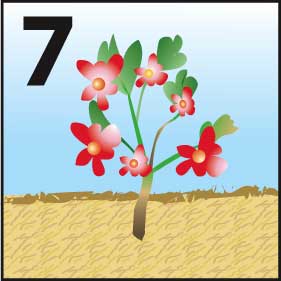 |
FLOWERS APPEAR - Plant completes growth of leaves and branches, and
rests from labour or active growth. Growth is directed to produce
flowers. |
|
8th phase |
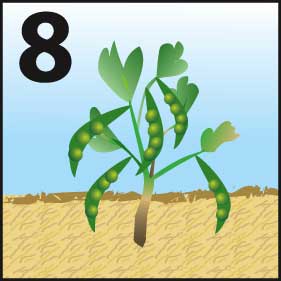 |
FRUITION - Flowers drop petals, and fruit or seed pods ripen. Fruit is
plucked. |
|
9th phase |
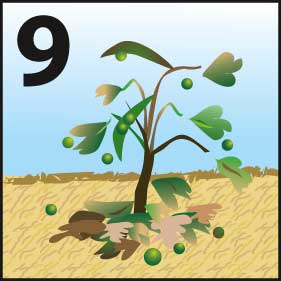 |
CLOSE of CYCLE or DORMANT PERIOD - Fruit that is not picked falls to
the ground. Seed pods shaken by the winds distribute seeds for the next
season and cycle. Fruit lies under leaf mulch and rots, leaving seeds to
create a new plant in the spring. |
|



